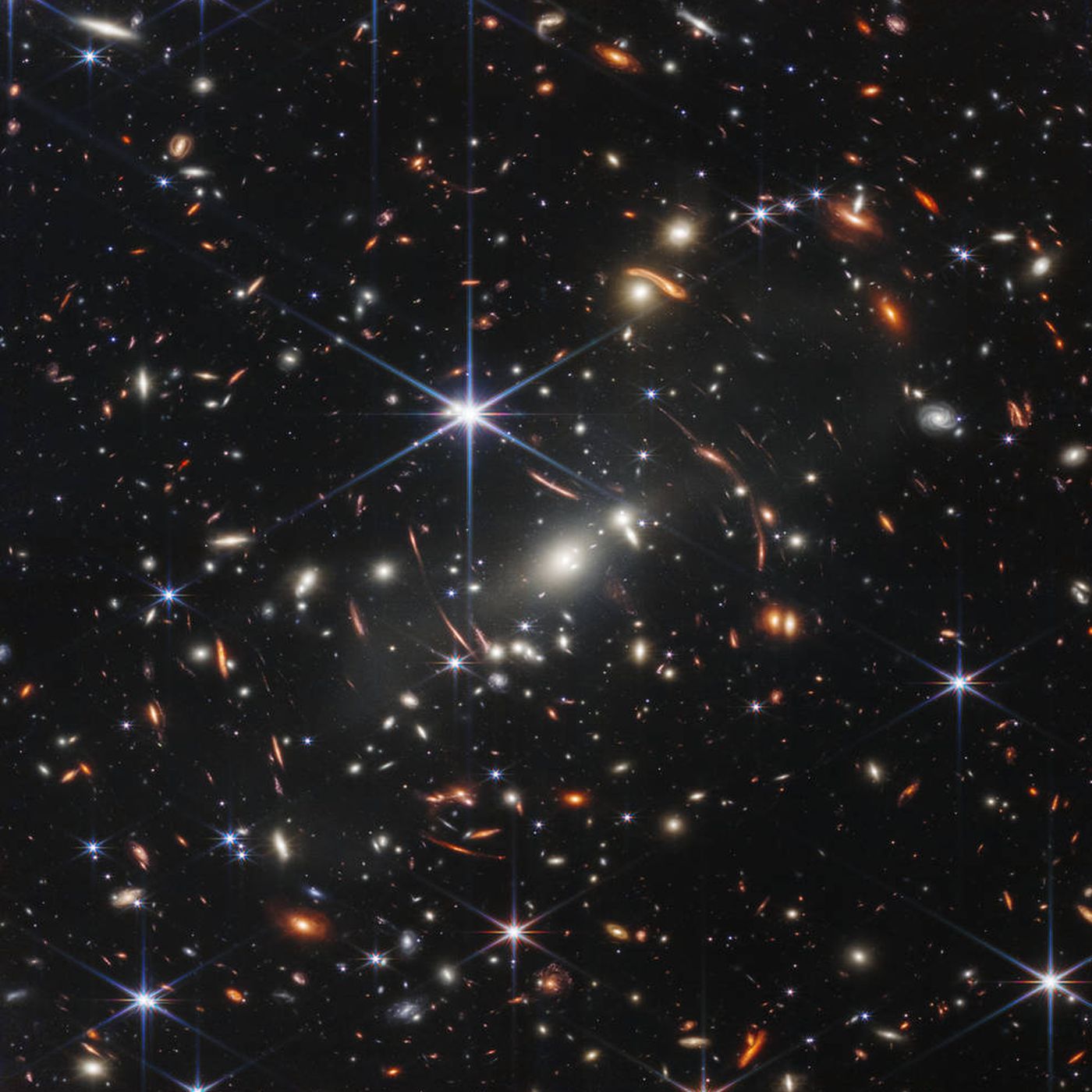James Webb Space Telescope peers into the 'ghostly light' of interstellar space
The faint light emitted by 'orphan' stars that exist between the galaxies in galactic clusters is featured in the first deep field image produced by the space telescope.

The first deep field image of the cosmos taken by the James Webb Space Telescope (JWST) has allowed scientists to study the faint almost ghostly light from orphan stars that exist between galaxies in galactic clusters.
Not gravitationally bound to galaxies, these stars are pulled free of their homes and drift into intergalactic space by the massive tidal forces generated between galaxies in clusters. The light emitted by these stellar orphans is called intracluster light and it is so dim that it possesses just one percent of the brightness of the darkest sky it is possible to see over Earth.
Not only could the study of this ghostly light from orphan stars reveal how galactic clusters form, but it could give scientists hints at the properties of dark matter, the mysterious substance that accounts for around 85% of the universe's mass.
Dark matter doesn't interact with light meaning scientists know it isn't the same as everyday matter made up of protons and neutrons. Its presence can currently only be inferred by its gravitational interactions which literally prevent the stars and planets of galaxies from flying apart.
The JWST sees the universe in infrared light, frequencies of electromagnetic radiation that let astronomers see galactic clusters differently from the picture painted in visible light.
The sharpness of the JWST infrared images allowed Instituto de Astrofísica de Canarias (IAC) researchers Mireia Montes and Ignacio Trujillo to study the intracluster light from the galactic cluster SMACS-J0723.3–7327 in an unprecedented level of detail.
Breaking space news, the latest updates on rocket launches, skywatching events and more!
This sharpness arises from the fact that JWST images of SMACS-J0723.3–7327, which is located around 4 billion light-years from Earth in the constellation of Volans, are twice as deep as observations of the same cluster taken previously by the Hubble Space Telescope.
"In this study, we show the great potential of JWST for observing an object which is so faint," research first author Montes, said in a statement. "This will let us study galaxy clusters which are much further away, and in much greater detail."
Studying this faint intracluster light required more than the sheer observing power of the JWST, however, meaning the team also needed to develop new image analysis techniques. "In this work, we needed to do some extra processing to the JWST images to be able to study the intracluster light, as it is a faint and extended structure," Montes explained in the statement. "That was key to avoid biases in our measurements."
The data obtained by the scientists is a striking demonstration of the potential of intracluster light to reveal the processes behind the formation of structure in galactic clusters.
"Analyzing this diffuse light, we find that the inner parts of the cluster are being formed by a merger of massive galaxies, while the outer parts are due to the accretion of galaxies similar to our Milky Way," Montes said.
In addition to this, because the intracluster stars follow the gravitational influence of the cluster as a whole rather than that of individual galaxies, the light from these stellar orphans presents an excellent way of studying the distribution of dark matter in these clusters.
"The JWST will let us characterize the distribution of the dark matter in these enormous structures with unprecedented precision, and throw light on its basic nature," study second-author Trujillo added.
The duo's research was published on Dec. 1 in the Astrophysical Journal Letters.
Follow us on Twitter @Spacedotcom or on Facebook.

Robert Lea is a science journalist in the U.K. whose articles have been published in Physics World, New Scientist, Astronomy Magazine, All About Space, Newsweek and ZME Science. He also writes about science communication for Elsevier and the European Journal of Physics. Rob holds a bachelor of science degree in physics and astronomy from the U.K.’s Open University. Follow him on Twitter @sciencef1rst.

